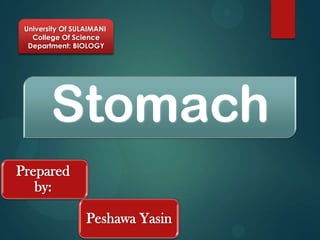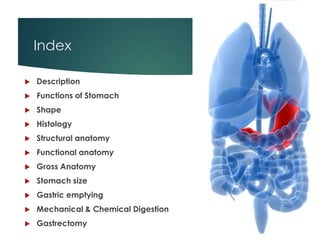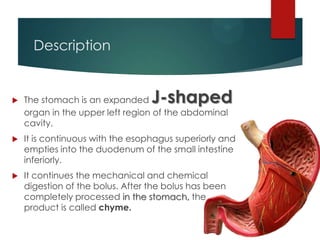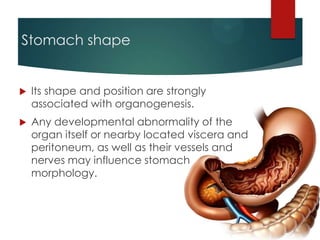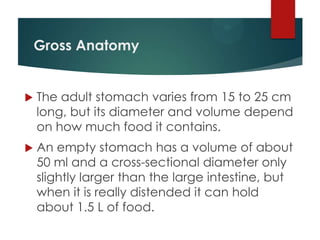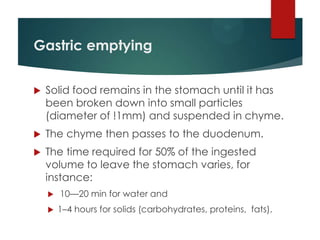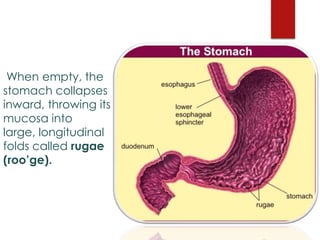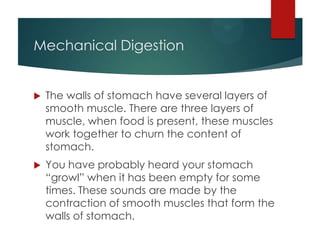This document provides an overview of the stomach, including its description, functions, shape, histology, structural and functional anatomy, gross anatomy, size, emptying process, and role in mechanical and chemical digestion. It also discusses gastrectomy procedures including total and subtotal gastrectomies and their common aftereffects. Comparisons are made between stomach anatomy in different animal species. References include anatomy textbooks, peer-reviewed articles, and websites.
